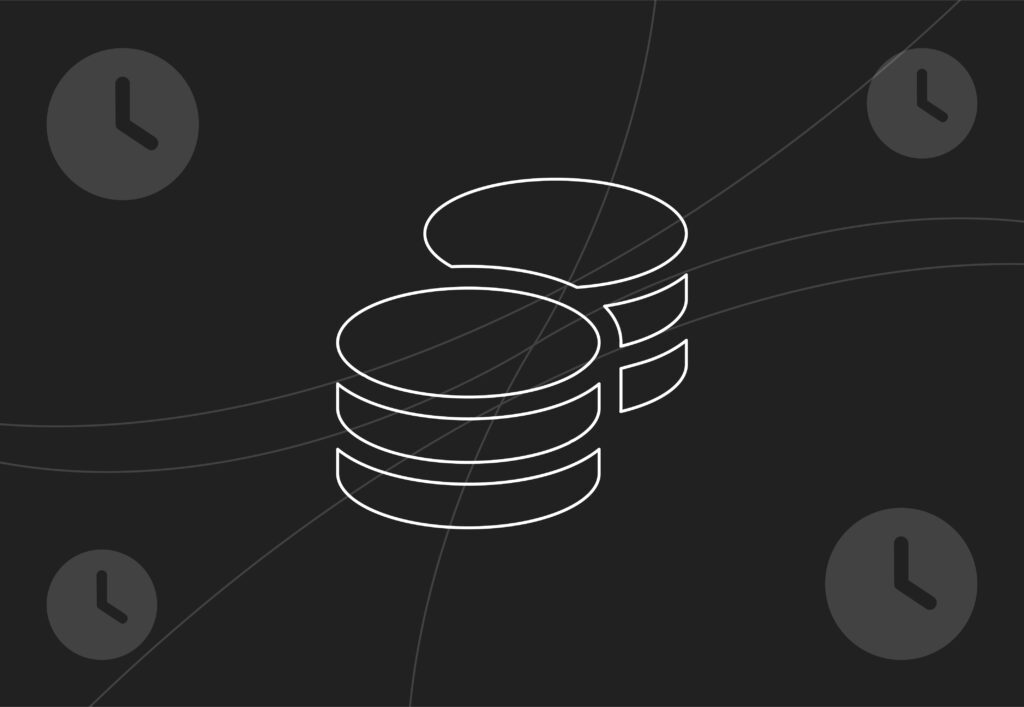
PPC key metrics: What they mean and how to measure them

Without tracking the right kind of PPC metrics – you will inevitably be making important optimisation decisions in the dark, which can lead to wasted budget and missed opportunities for growth.
Whether you are managing paid search, Shopping or Performance Max campaigns, understanding what to measure, how to measure it and what it actually means is paramount in driving better results.
If you want your PPC strategy to be driven by insight – and not guesswork- get in touch with our expert team here.
Why do PPC metrics matter?
PPC Metrics are your core components to any successful paid search campaign – they allow you to see what is working and what is not.
By keeping track of these metrics, you are able to:
- Optimise Ad Spend – by allocating the spend to top-performing campaigns or keywords, ensuring efficiency within your PPC strategy.
- Identify top-performing assets – now that the PPC landscape is increasingly becoming more focused to visuals and creatives, ensuring that assets used resonate with your target audience is extremely important.
- Spot any issues within the account – this can lead to investigations as to why we have seen traffic drop or any dips in performance.
- Improve ROAS – understanding and focusing on what drives business success, to ensure we are not just driving traffic.
PPC Metrics may also help us to understand campaign success within the wider marketing mix, understanding business needs at a wider scale:
- For example, if a client is focused on Brand Awareness, we can look at metrics such as Impressions and CTR to see if wider activity is driving this.
- If their focus is on lead-generation or sales, PPC metrics such as CVR% (conversion rate), CPA (Cost per Acquisition) and ROAS (Return on Spend) can help us identify business success.
Therefore, keeping track of the right kind of PPC metrics for your client can allow us to make wider spend allocation decisions, test effectively and improve performance in a continuous manner.
Core PPC metrics explained
Impressions
- What is it? The number of times your PPC ad has been shown to users.
- What does it tell us? How visible our PPC keywords are, high impression volume indicates that ads are being shown often, but doesn’t tell us if these ads are being engaged with.
Clicks
- What is it? The number of times your PPC ad has been engaged with, in this instance, how many times it has been clicked on.
- What does it tell us? Basic levels of engagement, if a user has been shown our PPC ad , then they have clicked on it.
Click-Through Rate (CTR)
- What is it? The percentage of impressions that resulted in a click.
- Formula: (Clicks / Impressions) x 100
- What does it tell us? How compelling your ads are; higher CTR indicates higher engagement with ad copy and targeting.
Cost Per Click (CPC)
- What is it? CPCs are a cost-efficiency metric that tells you how much each Click is costing you.
- Formula: Cost / Clicks
- What does it tell us? Primarily this tells us how much we are paying for traffic, but tracking CPCs allows you to see how competitive the market is currently (higher CPCs can mean there is increased competition for bids), whether these clicks are bringing in relevant traffic and the quality of your campaign assets as Google Ads will allocate better CPCs to higher quality ad campaigns.
- What is it? How many potential impressions could you have got against how many ad auctions are included in your ad.
- Formula: Impressions / Total Eligible Impressions
- What does it tell us? Primarily used as a visibility metric, this can help you understand whether your ads might reach more people if you increase bid or budget.
Conversion Rate (CVR)
- What is it? CVR describes how many people have converted once they have arrived on site via your ad.
- Formula: Total Conversions / Clicks
- What does it tell us? CVR is paramount as an indicator for various elements of PPC success, including business revenue, as it tells us how many people are actually taking action on the landing page following engagement with your PPC Ad.
Cost Per Acquisition (CPA)
- What is it? CPA is how much it costs to convert a customer, for example if we are seeing higher CPA it means it is more expensive to acquire a customer.
- Formula: Total Cost / Total Conversions
- What does it tell us? Healthy CPA values will depend on various elements including Lifetime value and ROAS, but generally it helps businesses understand how much they’re paying to convert a customer and is a KPI in measuring campaign success.
Revenue
- What is it? The income generated from your conversions (e.g. sales or leads), driven by your PPC campaigns.
- What does it tell us? This tells us about the financial return of your PPC campaign, so that budget or structure can be allocated sufficiently. E/g if we know some products generate higher revenue than others, this can be tied into our overarching PPC strategy.
Return on Ad Spend (ROAS)
- What is it? The revenue you have earned for each pound spent on advertising.
- Formula: Revenue (Conv. Value) / Total Spend
- What does it tell us? ROAS is another key efficiency metric, telling us how profitable your advertising spend is. ROAS targets will vary from business to business, but as a core metric this can allow us to optimise ad spend for efficiency and measure campaign effectiveness.
Quality score
- What is it? Google’s way of measuring the quality and relevance of your ads, keywords and landing pages. This is scored 1-10, and highlights where you can improve performance across Ad relevancy, Landing page expectancy, and expected CTR.
- What does it tell us? This is used as a diagnostic tool – it helps you look at whether keywords are aligned to ads (to make the user journey seamless), whether you are sending users to the right kind of landing page and if ads are engaging enough to drive clicks. This can therefore be used to see if you are targeting keywords too broadly, if ad copy is relevant to the keyword and if landing pages match user intent.
Metrics by goal type
The importance of PPC metrics differ from campaign to campaign, which is why it is crucial to track metrics against what you are trying to achieve – whether this is brand awareness, additional traffic to site, lead generation or driving sales.
Brand awareness
If your goal is to build brand awareness, you will most probably need to be focused on maximising your visibility and reach through your PPC strategy.
Therefore, the following metrics will be important to your goals:
- Impressions: How many times has your ad been viewed?
- Impression Share: To see how much of the available reach you are capturing.
- CTR: To see how appealing ads are, even if clicks are not your main objective.
Website traffic
Your goal may be to simply drive higher traffic to your website, and therefore gain more visitors.
The following metrics will be imperative for your paid search campaigns:
- Clicks: Directly measure how much traffic you are getting to your site.
- CTR: Measure ad engagement; a higher CTR means ads are more appealing.
- CPC: Monitor how expensive this traffic is and how this may be impacting your overall ad spend.
Lead generation
If your business relies on leads, your primary goal is to get users to take action to move them into your sales funnel.
If this is the case, the following metrics should be focused on:
- Conversions (Leads): These are paramount in your overall strategy, as this is your primary objective. To track these correctly, you will need to set up conversion tracking in Google Ads or goals from GA4.
- Conversion Rate: The rate at which your clicks are turning into leads on site.
- CPA (Cost Per Acquisition): To keep track of how much each lead is costing within your overall ad spend.
However, it is important to note that you will want to ensure you are not only tracking the volume of conversions (leads), but the lead quality also.
E-commerce
If you are utilising PPC for an online store, business objectives will lie in driving product purchases, maximising revenue and scaling profitability.
However, it is important to note that strategy should not be to drive any sale, but ensuring profitability is sustainable, and therefore, you need to be tracking the right kind of metrics, including:
- Conversions (Sales): The total number of purchases made via your ads. This is the most basic way to measure sales volume and campaign effectiveness.
- Conversion Value (Revenue): The total revenue generated from your ad-driven sales, which allows you to calculate profitability and evaluate performance beyond the number of sales.
- ROAS (Return on Ad Spend): ROAS shows how efficient your ads are at generating revenue. A ‘good’ ROAS is completely dependent on your margins and therefore will change from business to business.
- CPA: How much are you spending, on average, to get a customer? Even if ROAS looks healthy, CPA has to align with profit margins to ensure a successful PPC strategy.
- AOV: The average revenue per transaction from your ads. Higher AOV means more value from a customer, meaning CPA could be higher but still profitable.
Tools you can use to measure PPC metrics
The right tools are also key in tracking PPC performance, having a wide range of analytic data helps you make smarter strategic decisions, identify quick wins and then scale effectively.
Below are some of the top tools used by PPC specialists and why they are so important:
Google Ads
Arguably, this is your main point of truth for campaign, ad-group and keyword performance. This is important for real-time campaign monitoring, and should be used daily for overall account checks, bid strategy optimisation and rigorous A/B test and learning.
What can you measure?
- Key PPC Metrics (Impressions, Clicks, CPCs, CTR)
- Conversions and Conversion values.
- Efficiency of your campaigns – ROAS, CPA and IS%.
- Bid Strategy status – are your campaigns currently in learning? Are they limited?
- Ad & Keyword performance breakdowns including important metrics such as Quality Score & Ad Rank.
For ease, Google Ads Editor is also a great tool to make quick and easy edits to existing ads without having to delve into the full Google Ads user interface.
Google Analytics
GA4 is a web analytics tool used to help businesses track and analyse website traffic, user behaviour and marketing performance.
What can you measure?
- Track users across websites, offering metrics such as bounce rate, session duration and conversion paths.
- Audience segmentation allows you to deep dive into data to understand multiple user groups.
- Custom reports can also allow you to track PPC metrics that are important to your business, allowing you to analyse and optimise campaign performance.
- This can then help you identify which ads and landing pages perform best and inform PPC strategy.
Tips for success:
- Link GA4 with Google Ads to unlock better attribution and deeper insight into consumer behaviours.
- Utilise exploration reports to dig into cross-channel performance and integrate holistic data analysis into your PPC strategy.
Google Search Console
Although GSC doesn’t directly track or provide PPC metrics, it can be an invaluable tool in understanding how your landing page performs in organic search results – which can indirectly inform your PPC strategy.
What can you measure?
- PPC Quality Score Metrics – GSC demonstrates Core Web Vitals, mobile usability and page load speed – all of which can directly impact your CPCs, CTR and IS%.
- Organic Search terms – this can then allow you to see high-impression, low click keywords that could be incorporated into your paid campaigns. .
Common mistakes to avoid
Even PPC experts can misread data – it’s easy to focus on the wrong things, or even draw the wrong conclusions. Below are the most common mistakes that are made, and how we can avoid them:
Chasing low CPCs without considering your conversion quality
Low CPCs can often look great, but if the traffic is converting, there is no place for them in your PPC set up.
Top Tips:
- Focus on your CPA or ROAS not just CPCs – although a good indicator of other factors including Quality Score.
- For example, if you are receiving multiple £0.25 clicks that never convert, it will be wasting budget compared to a £2.50 click that you can see is bringing in quality conversions and revenue for your business.
Relying too heavily on CTR
Although a helpful indicator of how engaging your ads are, you can often assume that high CTR is an indicator of a campaign performing well.
Top Tips:
- Delve deeper into metrics to see whether CTR is paired with a higher CVR or post-click engagement (like bounce rate or time on site).
- Often ads that receive high clicks may get attention on the SERP but are not driving actionable measurements for revenue (e.g. sales).
Ignoring revenue & ROAS
Focussing on conversions alone may mislead you into believing a campaign is performing well – but not all conversions are equal.
Top Tips:
- Reporting on conversions without considering value or revenue may mean that, although overall conversions look good, they aren’t making you profitable.
- Always link conversions back to revenue or ROAS – especially in ecommerce or lead generation campaigns with variations in product value or deal size.
Not factoring in attribution windows
Conversions will have a delay due to last-click attribution models, and therefore conversions you may see in the interface today might have started with a click almost two weeks ago.
Top Tips:
- Understand your attribution model ( is this last-click? Is it data-driven?), and give campaigns and conversions time to mature, especially when dealing with longer sales cycles.
- This will avoid evaluating campaigns too quickly and making strategic optimisations that aren’t based on holistic data.
Conclusion
PPC metrics are not just numerical data – but they are a window into what is working and what is not working within your campaigns, allowing you to make informed decisions as to where your strategy should go next.
Although there are a vast number of metrics to look at, every data point tells part of the story. To get a holistic view of campaign performance, you need to know what to track, how to track it and how to interpret it with context.
Therefore, not just reporting on PPC metrics but understanding them is key to any successful PPC performance. When you use metrics in the right way, you can make smarter optimisation decisions, scale your accounts faster and ultimately drive more meaningful results from your ad spend.
Need help in making sense of PPC metrics? Please don’t hesitate to reach out to our PPC experts via our website.


